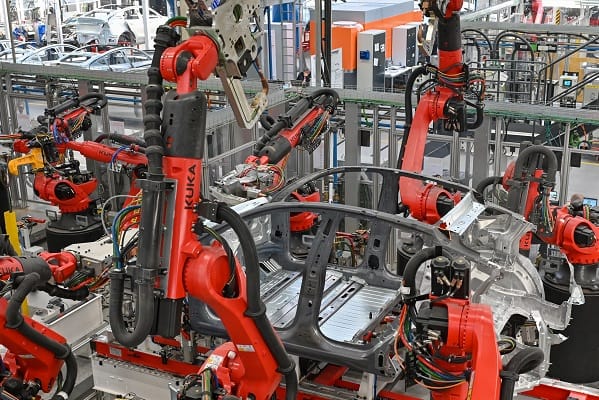Product customisation is no longer a luxury; it’s a demand. As customers look for products that fit their unique needs, businesses are turning to advanced technologies to meet this demand.
One such technology that’s taking the customisation game to the next level is Computer Numerical Control (CNC) cutting. If you’re looking to understand why CNC cutting is revolutionising product customisation, you’re in the right place.
What is CNC cutting?
CNC cutting is a precision manufacturing process using computer-controlled machines to cut, carve, or shape materials like metal, wood, plastic, and foam. Guided by digital designs, every cut is accurate to the millimeter. The beauty of CNC cutting lies in its automation, precision, and ability to replicate intricate designs at scale.
This technology enables the creation of highly customised products that were once impossible with traditional methods. From intricate signage to customised components for industries like automotive, aerospace, and consumer goods, CNC cutting can do it all.
Key features of CNC cutting in customisation
CNC cutting offers a range of features that make it an ideal solution for product customisation. From precision and efficiency to flexibility and scalability, these capabilities are reshaping how businesses approach personalised manufacturing.
Precision and accuracy
When it comes to customisation, precision is key, and every product must meet exact specifications. For cutting large boards like plywood or melamine, CNC panel cutting services provide highly accurate and clean cuts using router cutting, a method that uses a rotating tool to carve and shape materials.
These precisely cut boards are commonly used to create drawers, shelving units, and other furniture components. Unlike manual methods, CNC machines follow exact coordinates, eliminating errors that could compromise product quality. This precision also reduces waste, saving you money while benefiting the environment.
Speed and efficiency
Customisation typically demands a fast turnaround time. In industries like fashion and home décor, your customers don’t want to wait months for a unique product. Plasma cutting, which uses high-temperature ionised gas to quickly cut through thicker metals like steel and aluminum, speeds up the process without sacrificing quality.
Once the design is created and the machine is programmed, a CNC cutting machine can run 24/7 with minimal supervision. This drastically reduces production time compared to traditional methods. The result is quicker deliveries and more satisfied customers.
Material versatility
Another advantage of CNC cutting is its ability to work with a wide range of materials. Depending on your product needs, you can choose from metals, plastics, woods, and composites. CNC machines are designed to handle diverse materials, making it easier for you to offer a variety of customised products without the need for specialised equipment.
This versatility opens up countless possibilities. For instance, in the fashion industry, CNC laser cutting allows designers to create custom metal jewelry or even leather accessories. In construction or automotive manufacturing, it can produce customised components. The broad material compatibility ensures you can provide a high-quality product for any industry.
Flexibility in design
CNC cutting gives you the freedom to design without limitations. The designs of your customised products can be as intricate or simple as needed. This flexibility is crucial in today’s market, where customers demand personalisation. From custom keychains to unique furniture pieces and intricate prototypes, this advanced cutting process can bring your ideas to life.
This technology also allows you to easily tweak designs. If a customer requests a minor change, you can update the design on the computer and have the machine produce the new version. This quick iteration capability makes CNC cutting invaluable for businesses that rely on personalisation.
Lower labour costs
Customisation can be labor-intensive, especially with traditional methods. However, CNC cutting significantly reduces labor costs by automating the manufacturing process. With CNC machines handling multiple tasks autonomously, the need for manual labor is minimised, allowing fewer workers to manage the floor.
Moreover, CNC machines can handle complex designs with less human intervention. This automation not only helps lower costs but also frees up workers to focus on more critical tasks, like quality control or design modifications. For you, this can translate to higher profit margins and more resources available to invest in other parts of your business.
Scalability and consistency
Whether you need one custom product or hundreds, CNC cutting ensures that the quality remains consistent. Once a design is finalised, it can be reproduced over and over again without any variation. This consistency is critical for businesses that need to produce large quantities of customised products for a growing market.
The scalability of CNC cutting makes it possible to produce small batches or mass quantities with the same level of precision. If a customer wants a limited-edition product or a one-of-a-kind item, you can deliver it. And if demand for the product increases, scaling up production is simple.
Streamlined workflow
CNC cutting also streamlines the workflow, making it easier for you to manage the customisation process. With traditional methods, you’d need to coordinate different teams to handle design, material cutting, assembly, and finishing. With CNC cutting, the entire process is much more integrated.
Once the design is entered into the CNC system, the machine takes care of everything. It cuts, drills, or shapes the material and can even apply finishing touches, all in one process. This reduces the time spent on handoffs between different stages and minimises the chance of delays, giving you better control over your production timeline.
Together, these features make CNC cutting a powerful tool for meeting customer demands for tailored products. As technology continues to advance, these benefits will only expand, providing even more opportunities for customisation.
Innovation in CNC cutting and customisation
CNC cutting technology is constantly evolving, unlocking new possibilities for product customisation. Advances in CAM software, hardware, and hybrid manufacturing—such as integrating 3D printing—are pushing the boundaries of what can be achieved with computer numerical control. These innovations make it easier to create more intricate designs and work with complex materials, allowing businesses to deliver cutting-edge products.
The final cut
CNC cutting is revolutionising product customisation with unparalleled precision, speed, and flexibility. It seamlessly meets the demands of a personalised market, working with various materials, reducing labor costs, and delivering consistent results.
This technology opens up endless possibilities for businesses across industries. If you have yet to try CNC cutting, now’s the perfect time to explore how this transformative technology can elevate your product offerings.








